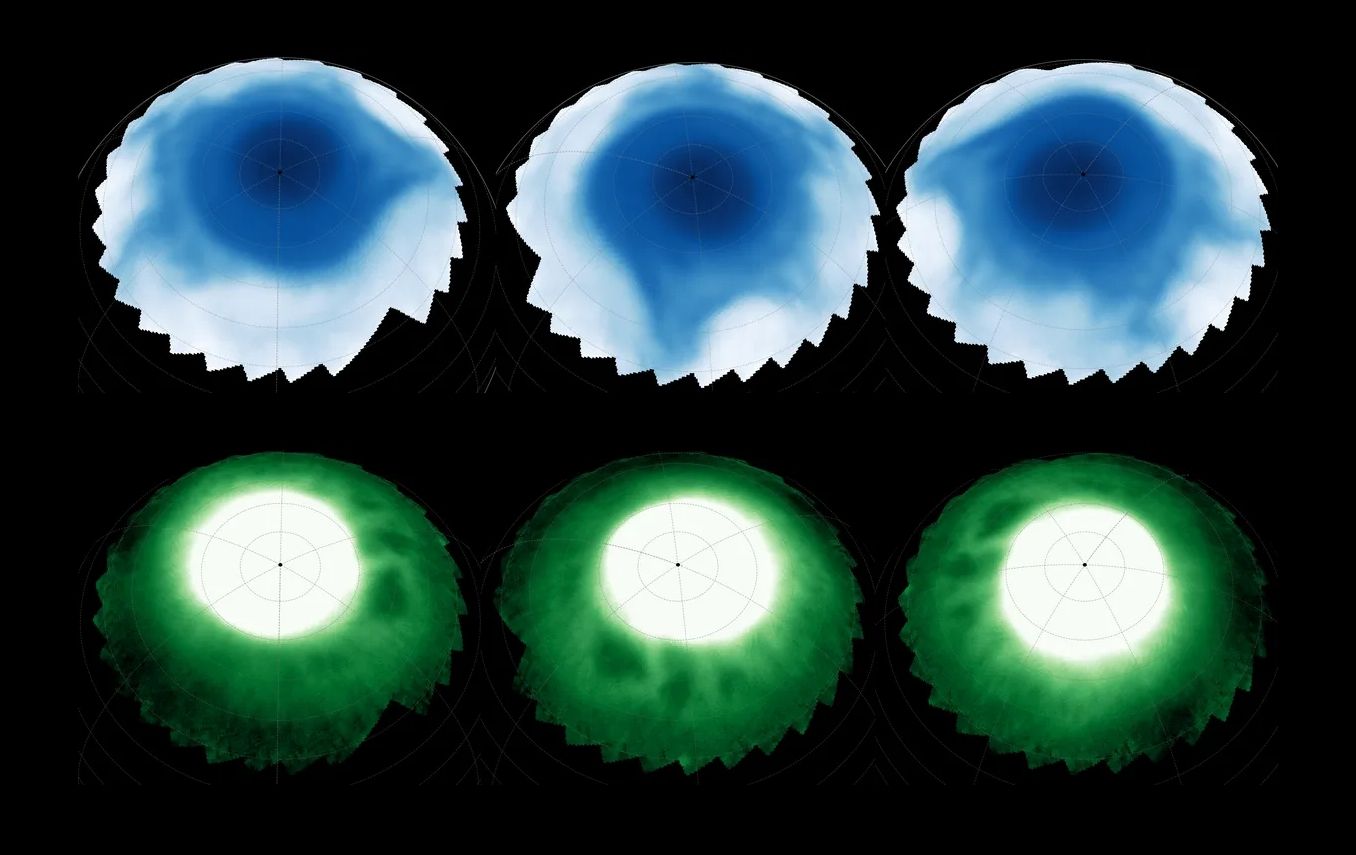🪐 Saturn reveals strange and unexplained phenomena
Published by Cédric,
Article author: Cédric DEPOND
Source: Geophysical Research Letters
Other Languages: FR, DE, ES, PT
Article author: Cédric DEPOND
Source: Geophysical Research Letters
Other Languages: FR, DE, ES, PT
Follow us on Google News (click on ☆)
This unprecedented discovery is the result of a ten-hour observation campaign conducted in November 2024. The telescope's infrared instruments probed the upper layers of Saturn's atmosphere with unmatched precision. Scientists discovered two surprising structures there: dark beads and an asymmetric star-like figure, overturning current theoretical models.

Top: A strange star-shaped structure with four of the six arms visible in Saturn's stratosphere.
Bottom: Saturn's ionosphere, showing the dark bead-like features.
Image credit: NASA/ESA/CSA/Stallard et al 2025 - adaptation www.techno-science.net
Unprecedented atmospheric structures
Saturn's ionosphere, an electrically charged region, showed a series of dark spots contrasting with the glow of the polar auroras. These "beads" show remarkable stability over several hours. Their formation seems linked to dynamic processes.
Lower down, in the stratosphere, a four-armed, star-shaped structure extends from the north pole towards the equator. The absence of two expected arms makes this configuration particularly intriguing for planetary scientists. This asymmetry suggests atmospheric phenomena not yet catalogued.
The location of these structures seems to follow a precise logic. The arms of the stratospheric star appear aligned with the points of the polar hexagon, a well-known cloud vortex. The dark beads in the ionosphere partially overlap with these alignments. This spatial correlation could indicate an interaction between the different atmospheric layers.
Planetary scientists' hypotheses
The dark beads would result from interactions between Saturn's magnetic field and its rotating atmosphere. These areas could correspond to a modulation of the energy that powers the polar auroras. Studying these structures offers a new perspective on magnetosphere-atmosphere coupling.
The asymmetric star shape likely involves atmospheric waves propagating vertically. Saturn's rapid rotation would influence their propagation, creating imbalances. These waves could be generated by the turbulence of the polar hexagon located far below.
The equinox period during the observations may have enhanced the visibility of these phenomena. Saturn's particular orientation relative to the Sun creates optimal lighting conditions. Future observations by James Webb will determine if these structures evolve with the giant planet's seasons.